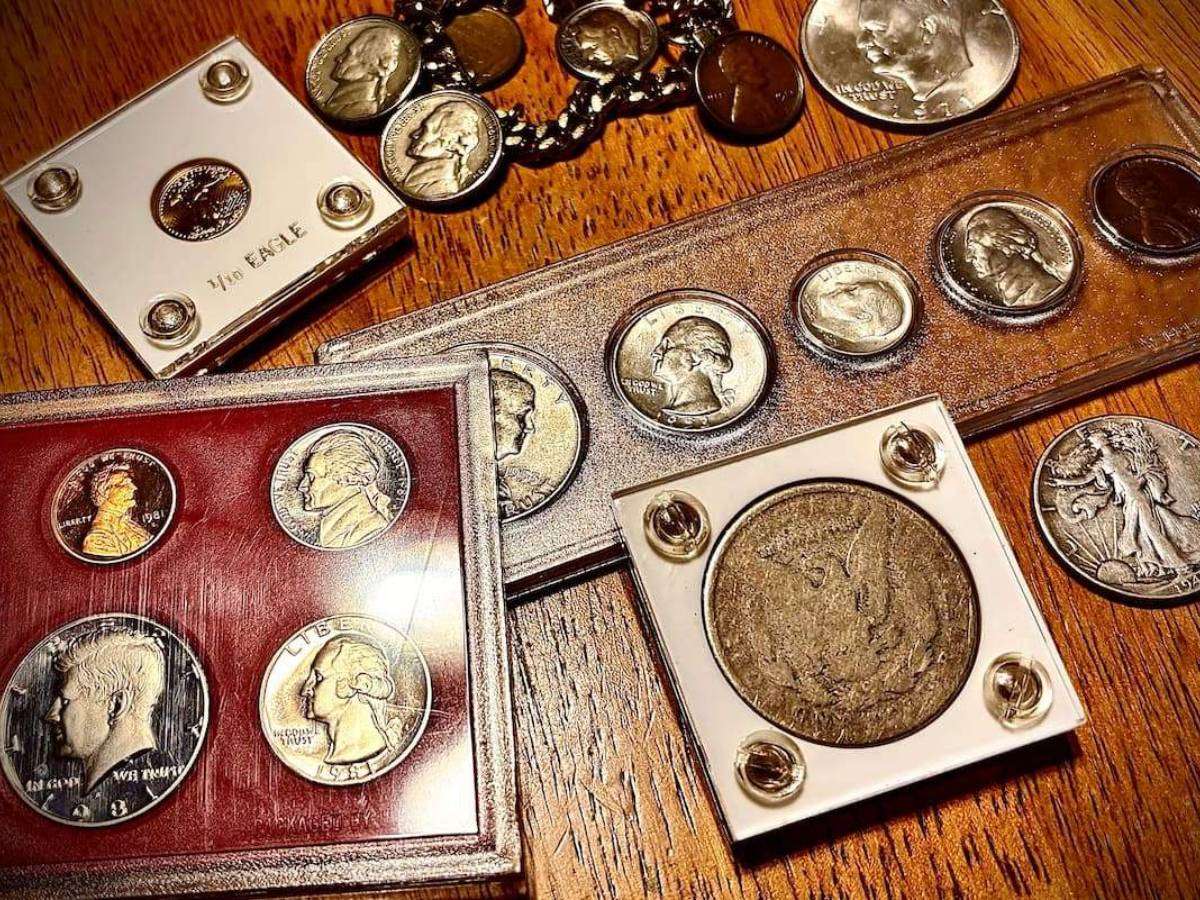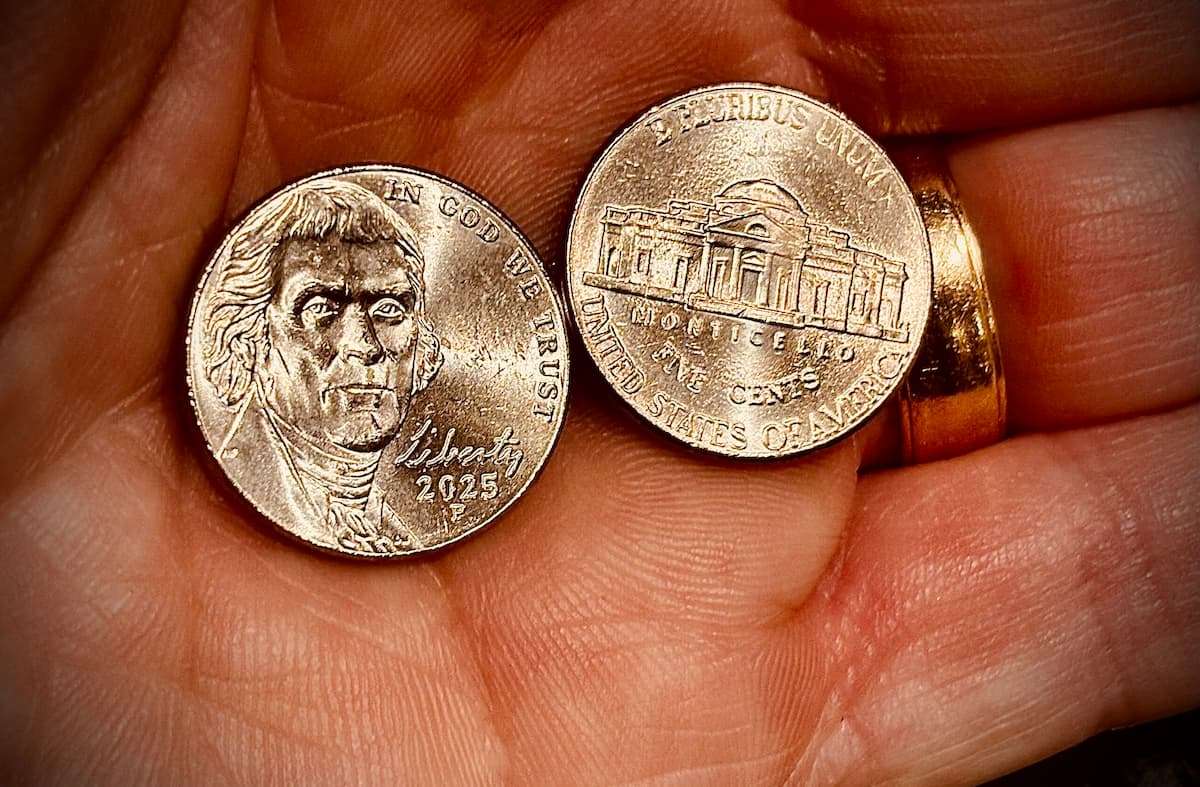How To Grade U.S. Half Dollars
It’s important to know the grade (condition) of your half dollar — because that’s one of the most important factors in determining your coin’s value.
In a previous article I listed information that might help you get an approximate idea of the grade of your coin.
Now I’m going to go into detail showing you how to obtain exact grades for your circulated half dollars.
There are 4 types of half dollars that I will cover here:
- Kennedy half dollars (1964–present)
- Franklin half dollars (1948–1963)
- Walking Liberty half dollars (1916–1947)
- Barber half dollars (1892–1916)
Here are the various parts of a coin + What the coin grade abbreviations and numbers mean.
Let’s start with the common Kennedy half dollar coin…
Kennedy Half Dollar Grades
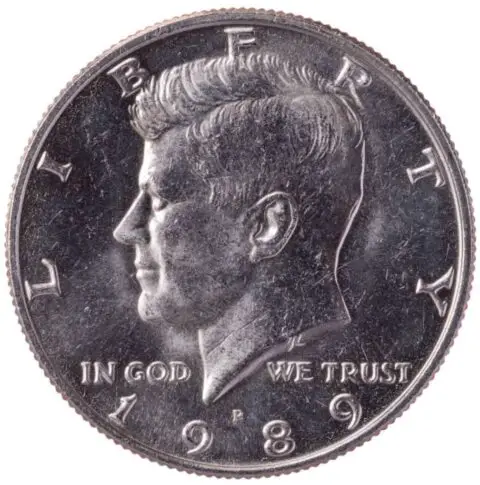
AU-55
- Obverse: Only a trace of wear shows on highest points of cheek, jawbone, and hair below part.
- Reverse: A trace of wear shows on central tail feather. Nearly all mint luster still present.
EF-40
- Obverse: Slight wear shows on cheek, along jawbone, and on high points of hair below part. Hairlines are sharp and detailed.
- Reverse: High points of arrows and right wing tip are lightly worn. Central tail feathers are worn but clearly defined and fully separated. 3/4 of mint luster still present.
VF-30
- Obverse: Wear spots show on hair below part and along cheek and jaw. Hairlines are weak but have nearly full visible details.
- Reverse: Wear shows on arrow points but some details are visible. All central tail feathers are plain. Wing tips are lightly worn.
Franklin Half Dollar Grades

AU-55
- Obverse: Only a trace of wear shows on highest spots of cheek and hair left of ear.
- Reverse: A trace of wear shows on highest points of lettering on the bell. Nearly all mint luster still present.
AU-50
- Obverse: Traces of wear show on cheek, hair left of shoulder, and left of ear.
- Reverse: Traces of wear show on lettering and along ridges at bottom. 3/4 of mint luster still present.
EF-45
- Obverse: Slight wear shows on cheek, high points of hair behind ear, and along shoulder. Hairlines at back of head are sharp and detailed.
- Reverse: High points of straps on beam are lightly worn. Lines at bottom of bell are worn but clearly defined and separated. Lettering on bell is very weak at center. Half of mint luster still present.
EF-40
- Obverse: Wear shows on cheek, high points of hair behind ear, and at shoulder.
- Reverse: High points of beam straps and lines along bottom of bell are lightly worn but details are clearly defined and partially separated. Lettering on bell is worn away at center. Part of mint luster still present.
VF-30
- Obverse: Wear spots show on hair at shoulder, behind ear, cheek, and jaw. Hairlines are weak but have nearly full details.
- Reverse: Wear shows on bell lettering but some details are visible. Straps on beam are plain. Half of line details are worn smooth.
VF-20
- Obverse: 3/4 of lines still show in hair. Cheek lightly worn but bold. Some details around the ear are visible.
- Reverse: Wear shows on beam but most details are visible. Bell is worn but bold. Lines across bottom of bell are flat near crack.
F-12
- Obverse: Hair details show only at back and side of head. Designer’s initials weak but clearly visible. Part of cheek is worn flat.
- Reverse: Most lines at bottom of bell are worn smooth. Parts of straps on beam are nearly smooth. Rim is full.
VG-8
- Obverse: Entire head is weak and most details in hair from temple to ear are worn smooth. All letters and date are bold. Ear and designer’s initials are visible. Rim is complete.
Walking Liberty Half Dollar Grades

AU-55
- Obverse: Only a trace of wear shows on highest points of head, breast, and right arm.
- Reverse: A trace of wear shows on left leg between breast and left wing. 3/4 of mint luster still present.
AU-50
- Obverse: Traces of wear show on head, breast, arms, and left leg.
- Reverse: Traces of wear show on high points of wings and at center of head. All leg feathers are visible. Half of mint luster still present.
EF-45
- Obverse: Light wear spots show on head, breast, arms, left leg, and foot. Nearly all gown lines are clearly visible. Sandal details are bold and complete. Knee is lightly worn but full and rounded.
- Reverse: Small flat spots show on high points of breast and legs. Wing feathers have nearly full details. Part of mint luster still present.
EF-40
- Obverse: Wear shows on head, breast, arms, and left leg. Nearly all gown lines are visible. Sandal details are complete. Breast and knee are nearly flat.
- Reverse: High points of eagle are lightly worn. Half the breast and leg feathers are visible. Central part of feathers below neck are well worn. Traces of mint luster may still show.
VF-30
- Obverse: Wear spots on head, breast, arms, and legs. Left leg is rounded but well worn from above knee to ankle. Gown line crossing body is partially visible. Knee is flat. Outline of breast can be seen.
- Reverse: Breast and legs are moderately worn but clearly separated with some feathers visible in right wing. Pupil in eye is visible.
VF-20
- Obverse: Left leg is worn nearly flat. Wear spots show on head, breast, arms, and foot. Lines on skirt are visible but may be weak on coins before 1921. Breast is outlined.
- Reverse: Entire eagle is lightly worn but most major details are visible. Breast, central part of legs, and top edge of right wing are worn flat.
F-12
- Obverse: Gown stripes worn but show clearly except on coins before 1921 where only half are visible. Right leg is lightly worn. Left leg nearly flat and sandal is worn but visible. Central of body worn but parts of gown visible. Outer edge of rim is complete.
- Reverse: Breast is worn smooth. Half the wing feathers are visible although well worn in spots. Top two layers of feathers are visible in left wing. Rim is full.
VG-8
- Obverse: Entire design is weak. Most details in gown are worn smooth except for coins after 1921 where half the stripes must show. All letters and date are clear but top of motto may be weak. Rim is complete. Drapery across body is partially visible.
- Reverse: About 1/3 of feathers are visible and large feathers at ends of wings are well separated. Eye is visible. Rim is full and all letters are clear.
G-4
- Obverse: Entire design well worn with very little detail remaining. Legend and date weak but visible. Top of date may be worn flat. Rim is flat but nearly complete.
- Reverse: Eagle worn nearly flat but is completely outlined. Lettering and motto worn but clearly visible.
AG-3
- Obverse: Figure is outlined with nearly all details worn away. Legend is visible but half worn away. Date weak but readable. Rim merges with lettering.
- Reverse: Entire design partially worn away. Letters merge with rim.
Barber Half Dollar Grades
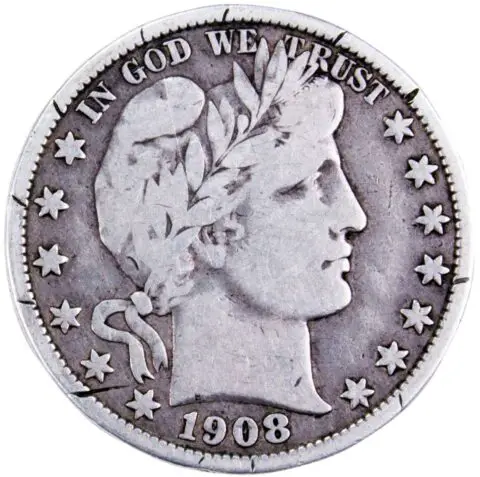
AU-55
- Obverse: Only a trace of wear shows on highest points of hair below BER in LIBERTY.
- Reverse: A trace of wear shows on head, tip of tail, and tips of wings. 3/4 of mint luster still present.
AU-50
- Obverse: Traces of wear show on cheek, tips of leaves, and hair below LIBERTY.
- Reverse: Traces of wear show on head, neck, tail, and tips of wings. Half of mint luster still present.
EF-45
- Obverse: Slight wear shows on high points of upper leaves, cheek, and hair above forehead. LIBERTY is sharp and band edges are bold.
- Reverse: High points of head, neck, wings, and talons are lightly worn. Lines in center tail feathers are clearly defined. Part of mint luster still present.
EF-40
- Obverse: Light wear shows on leaves, cheek, cap, and hair above forehead. LIBERTY is sharp and band edges are clear.
- Reverse: High points of head, neck, wings, and tail are lightly worn but all details are clearly defined. Leaves show trace of wear on edges. Traces of mint luster may still show.
VF-30
- Obverse: Wear spots show on leaves, cap, hair, and cheek. Bottom row of leaves is weak but has some visible details. LIBERTY and band are complete. Folds in cap are distinct.
- Reverse: Wear shows on shield but all details are visible. Most details in neck and tail are clear. Motto is complete.
VF-20
- Obverse: Over half the detail still shows in leaves. Hair and ribbon worn but bold. Every letter in LIBERTY is visible.
- Reverse: The shield is worn but most details are visible. Half of details in feathers are clear. Wings and legs show wear spots. Motto is clear.
F-12
- Obverse: Some details show in hair, cap, and facial features. All letters in LIBERTY are weak but visible. Upper row of leaves is outlined but bottom row is worn nearly smooth. Rim is full and bold.
- Reverse: Half of feathers are plainly visible. Wear spots show in center of neck, motto, and arrows. Horizontal shield lines are merged and vertical lines are separated. Letters in legend are worn but clear.
VG-8
- Obverse: Entire head is weak and most details in face worn smooth. Three letters in LIBERTY are clear. Rim is complete.
- Reverse: Eagle shows only a small amount of detail. Arrows and leaves are flat. Most of the shield is very weak. Part of the eye is visible.
G-4
- Obverse: Entire design well worn with very little detail remaining. Legend is weak but visible. LIBERTY is worn away.
- Reverse: Eagle worn flat but is completely outlined. Ribbon worn nearly smooth. Legend weak but visible. Rim worn to tops of letters.
AG-3
- Obverse: Head is outlined with nearly all details worn away. Date readable but partially worn away. Legend merging into rim.
- Reverse: Entire design partially worn away and legend merges with rim.
The Bottom Line…
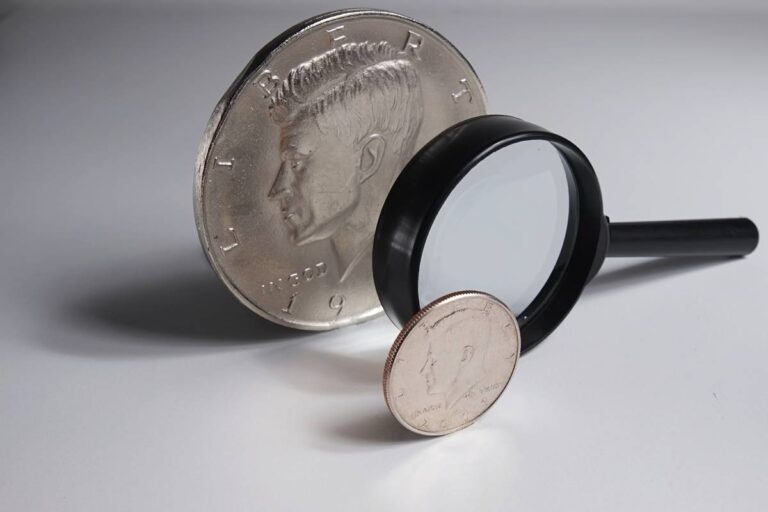
It takes a lot of time and experience to consistently grade coins accurately, but you’ll never get there if you don’t start somewhere.
Hopefully you’re able to grade your Kennedy half dollars, Franklin half dollars, Walking Liberty half dollars, and Barber half dollars better now.
Grab a coin magnifier and a copy of the U.S. Coin Grading Standards book. Then, watch this video to see how to grade coins yourself at home:

